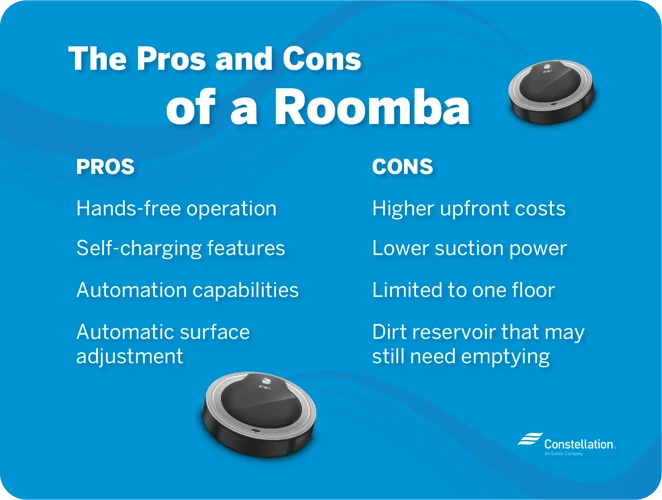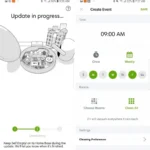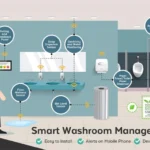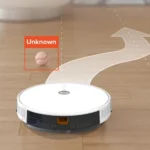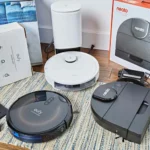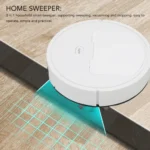Robot vacuums have revolutionized the way we clean our homes. With their advanced technologies, they have made it easier to maintain a clean environment without sacrificing too much time and effort. But what happens when the vacuum itself needs maintenance? This is where the benefits of self-maintenance features come in. These features not only save time and effort but also extend the life of the vacuum and improve its cleaning performance. In this article, we will explore the different self-maintenance features found in robot vacuums and their benefits. We will also give tips on how to maintain your robot vacuum to ensure it stays in top condition.
Benefits of Self-Maintenance Features

As homeowners strive to maintain a clean and healthy living space, choosing the right vacuum is essential. While traditional vacuums require frequent maintenance and upkeep, robot vacuums have self-maintenance features that make cleaning hassle-free. The benefits of self-maintenance features are numerous – they can spare you from laborious vacuum maintenance, lengthen the life of your robot vacuum, and optimize its cleaning performance. In this article, we’ll explore the advantages of robot vacuums with self-maintenance features as well as the common maintenance features available. We’ll also provide helpful tips on how to keep your robot vacuum well-maintained.
Saves Time and Effort
Self-maintenance features in robot vacuums provide a great benefit that can’t be overlooked. Their biggest selling point is the ability to save you precious time and effort. Since robot vacuums have the ability to clean autonomously, you can set them to work while you focus on other tasks. This is a huge time saver and frees up your valuable time.
Perhaps you lead an extremely busy life and can’t find the time to vacuum your floors regularly. In this case, a robot vacuum with self-maintenance features can give you the helping hand you need. These vacuums will work around the clock to keep your home clean even when you’re not around. Additionally, if you lead a physically demanding life, self-maintenance features in robot vacuums can be a lifesaver as you don’t have to exert much energy pushing it around your home.
This time-saving feature doesn’t stop at the cleaning process. Robot vacuums with self-maintenance features also help save precious time when it comes to upkeep and maintenance. Many models have features that allow them to maintain and clean themselves, which means less time for you spent on maintenance tasks.
Without self-maintenance features in robot vacuums, ensuring the longevity and cleaning performance of your vacuum would require more time and effort. But, with the self-maintenance aspects brilliantly woven into robot vacuums, you can now enjoy clean floors with minimal effort.
If you want to save time and effort on your floor cleaning tasks, robot vacuums with self-maintenance features are a great choice. To learn more about the importance of robot vacuum maintenance and tips to keep them in top condition, check out our robot vacuum maintenance tips article.
Extends the Life of the Vacuum
Extending the life of your robot vacuum is one of the biggest benefits of having self-maintenance features. Robot vacuums with these features can detect when there’s a problem, such as a brushroll that’s not spinning or a full dustbin, and can take actions, such as shutting down or returning to their dock, to prevent damage.
By preventing damage, these self-maintenance features can help you avoid costly repairs, and in some cases, the need to replace your robot vacuum altogether. The longer your robot vacuum lasts, the less money you’ll spend on buying a new one in the long run. Plus, by having a vacuum that lasts longer, you’ll reduce your environmental impact by creating less waste.
Another way that self-maintenance features can extend the life of your vacuum is by keeping it clean. A vacuum that’s clean and well-maintained will perform better and last longer than one that’s dirty and neglected. Self-cleaning brushrolls and self-emptying dustbins can help ensure that your robot vacuum stays clean and in good condition.
Of course, even with self-maintenance features, your robot vacuum will still need some maintenance from you. It’s important to follow the manufacturer’s instructions for cleaning and maintenance, including cleaning the filters and dustbin and replacing worn out parts as needed. Regular maintenance will help ensure that your robot vacuum stays in top condition and lasts as long as possible.
Self-maintenance features can help extend the life of your robot vacuum by preventing damage, keeping it clean, and ensuring that it operates as efficiently as possible. By investing in a robot vacuum with these features, you can save money in the long run and reduce your environmental impact. For more information on maintaining your robot vacuum, check out our article on the importance of robot vacuum maintenance.
Maximizes Cleaning Performance
Robot vacuums with self-maintenance features can outperform traditional vacuums for many reasons. One of the main benefits of self-maintenance features is that they maximize cleaning performance and ensure that the vacuum is always running at its best.
Here are some of the self-maintenance features that can help to keep your robot vacuum performing at its best:
- Self-cleaning brushroll: A clean brushroll ensures that the vacuum can pick up dirt and debris effectively. Robot vacuums with self-cleaning brushrolls can remove tangled hair and debris from the brushroll automatically, ensuring maximum cleaning performance.
- Self-adjusting cleaning head: Some robot vacuums have cleaning heads that automatically adjust to different floor surfaces. This feature ensures that the vacuum is always at the correct height for the best cleaning performance.
- Auto dirt disposal: When a vacuum’s dustbin is full, its cleaning performance can decrease. A robot vacuum with auto dirt disposal can empty its dustbin automatically, ensuring that it is always ready for more cleaning.
By keeping your robot vacuum’s brushes and filters cleaned and replacing parts as needed, you can also help to ensure that your robot vacuum is always performing at its best. Regular maintenance and upkeep are critical for keeping your robot vacuum running smoothly and effectively.
In comparison to traditional vacuums, robot vacuums with self-maintenance features greatly reduce the amount of time and effort needed to maintain them. Using a robot vacuum with self-maintenance features means that you can be sure that it will always operate at peak performance, leaving your floors cleaner and healthier.
If you’re interested in the maintenance differences between traditional and robot vacuums, check out our article on Robot vs Traditional Vacuums Maintenance. For more information on the importance of robot vacuum maintenance, check out Importance of Robot Vacuum Maintenance. If you’re still undecided on which type of vacuum to choose, read our article about Traditional vs Robot Vacuums to compare the two options. Lastly, if you’re looking for some tips on how to fix common robot vacuum issues, check out our Robot Vacuum Maintenance Fixes article.
Reduces Maintenance Costs
One of the greatest benefits of having self-maintenance features in a robot vacuum is the significant reduction in maintenance costs. Let’s face it, traditional vacuum cleaners need a lot of maintenance. Without proper maintenance, they may lose suction power, or even break down, resulting in costly repairs or replacements. However, robot vacuum cleaners with self-maintenance features can reduce the need for regular maintenance, which can save you both time and money.
So, how exactly do self-maintenance features on robot vacuums reduce maintenance costs?
Here are some reasons:
- Less wear and tear: Self-maintenance features such as self-cleaning brushrolls or self-adjusting cleaning heads can reduce the wear and tear on the vacuum. This means that you won’t need to replace parts or get repairs done as often, which can save you a considerable amount of money.
- Improved cleaning performance: When a vacuum cleaner is properly maintained, it can perform better and more efficiently. With self-maintenance features, your robot vacuum can maintain its performance, ensuring that the cleaning is done thoroughly every time. This can reduce the need for repeat cleanings, saving you money on electricity and time.
- Auto dirt disposal: Some robot vacuums come equipped with an auto dirt disposal feature that can significantly reduce maintenance efforts. These vacuums can self-empty their dustbins, meaning that you won’t have to empty them as often, saving you time and effort. With less manual intervention, the risk of broken or damaged parts reduces, reducing maintenance costs.
Robot vacuums with self-maintenance features can go a long way in reducing maintenance costs. They can improve the cleaning performance, reduce wear and tear, and require less manual intervention, which saves time, effort, and money. If you’re looking to get a robot vacuum that is not only efficient but also cost-effective, then it’s essential to consider one with self-maintenance features.
Most Common Self-Maintenance Features
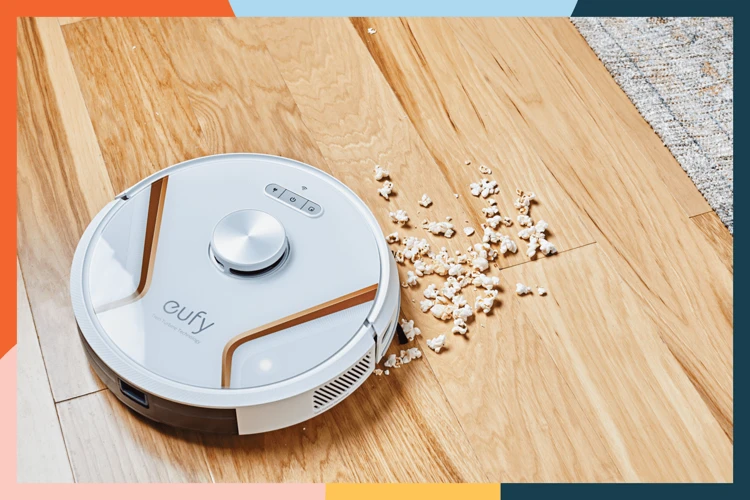
When it comes to robot vacuums, self-maintenance features are becoming increasingly popular among consumers. These features not only make the cleaning process more efficient, but they also help to extend the life of the vacuum and reduce maintenance costs over time. But what are the most common self-maintenance features found in robot vacuums? In this section, we’ll explore some of the key features that you may find in these advanced cleaning machines.
Auto Dirt Disposal
One of the most innovative self-maintenance features of a robot vacuum is the auto dirt disposal system. This feature is designed to automatically empty the vacuum’s dustbin into a larger container.
Here are a few key benefits of using a robot vacuum with auto dirt disposal:
- Less Maintenance: With auto dirt disposal, you won’t have to worry about emptying the dustbin as frequently. This not only saves time but also reduces the effort required to maintain the vacuum.
- Improved Cleaning Efficiency: An overfilled dustbin can reduce a vacuum’s suction power and cleaning efficiency. By automatically emptying the dustbin, the vacuum can maintain its optimal suction power for longer, resulting in a more thorough clean.
- Hygienic: Emptying the dustbin can be a messy and unpleasant task. With auto dirt disposal, you won’t have to come into contact with dirt, debris, or allergens that have been collected by the vacuum.
When choosing a robot vacuum with auto dirt disposal, consider the size of the dustbin and how frequently it will need to be emptied. Some models require the use of disposable bags, while others have a durable, washable bin. Additionally, be sure to factor in the additional cost of purchasing disposable bags if necessary.
Auto dirt disposal is a highly desirable self-maintenance feature for anyone who wants to save time and effort while keeping their home clean and hygienic.
Self-Cleaning Brushroll
One of the most common self-maintenance features found in robot vacuums is the self-cleaning brushroll. This is an important feature as the brushroll is responsible for agitating and picking up dirt, debris, and pet hair from carpets and floors.
The Importance of Brushroll Maintenance
Over time, the brushroll can get tangled with hair and debris, which can affect its performance and reduce its suction power. Clogged brushrolls can also damage the vacuum and lead to costly repairs.
How Self-Cleaning Brushrolls Work
Robot vacuums with self-cleaning brushrolls are designed to remove hair and debris from the brush automatically. The brushroll is equipped with specially designed bristles that sweep the dirt and debris towards the vacuum’s suction intake. The vacuum then sucks up the dirt and debris, leaving the brushroll clean and free of tangles.
To help illustrate how a self-cleaning brushroll works, the following table shows an example of some popular robot vacuums that feature this self-maintenance feature:
| Robot Vacuum | Self-Cleaning Brushroll |
|---|---|
| iRobot Roomba i7+ | Patented rubber brushes that reduce hair tangles and automatically clean themselves |
| Shark IQ Robot Vacuum | Self-cleaning brushroll with redesigned bristle pattern to prevent hair wrap |
| Eufy RoboVac 11S MAX | Anti-static brushroll to prevent hair tangling and automatically cleans itself |
Benefits of Self-Cleaning Brushrolls
Having a robot vacuum with a self-cleaning brushroll can provide numerous benefits, including:
- Improved Cleaning Performance: With a clean brushroll, the vacuum can agitate dirt and debris more effectively, leading to a deeper clean.
- Reduced Maintenance: With no need to manually clean the brushroll, users can save time and effort.
- Longer Vacuum Life: Self-cleaning brushrolls can prolong the life of a vacuum by reducing the wear and tear on the brush itself.
Conclusion
A self-cleaning brushroll is an essential feature to look for when choosing a robot vacuum. By automatically removing tangled hair and debris, it can improve cleaning performance, reduce maintenance, and extend the life of the vacuum. When considering a robot vacuum with this self-maintenance feature, be sure to factor in your budget, household needs, and the reputation of the brand and model.
Self-Emptying Dustbin
Robot vacuums with self-emptying dustbins are becoming increasingly popular due to their convenience and time-saving benefits. These self-maintenance features allow the vacuum to empty its own dustbin and continue cleaning without any intervention from the owner.
How does it work?
The self-emptying dustbin feature typically involves a docking station that serves as a charging point and a self-emptying station. The robot vacuum returns to the docking station once its cleaning cycle is complete or when the dustbin is full. The dustbin is then emptied into a larger storage container inside the docking station.
Benefits of Self-Emptying Dustbin
The self-emptying dustbin feature has several benefits that make it a desirable feature for robot vacuums. One of the most significant benefits is that it saves time and effort for the owner. Instead of having to manually empty the dustbin after each cleaning cycle, the vacuum takes care of it on its own.
The self-emptying dustbin feature also extends the life of the vacuum by reducing wear and tear on the internal components. This is because the vacuum does not have to work as hard to clean when the dustbin is full, which reduces the strain on the motor and other parts. As a result, the vacuum’s lifespan can be extended, reducing the need for costly repairs or replacement.
The self-emptying dustbin feature also maximizes cleaning performance by ensuring that the vacuum is always working at optimal performance levels. When the dustbin is full, the vacuum’s suction power can decrease, which can lead to reduced cleaning performance. However, with a self-emptying dustbin, the vacuum is always working at its best, ensuring that floors and carpets are always thoroughly cleaned.
Finally, the self-emptying dustbin feature can also reduce maintenance costs over time. Because the vacuum is always working at optimal performance levels, there is less wear and tear on the internal components, and the need for costly repairs or replacement is reduced.
Popular Models
Several popular robot vacuum models come equipped with the self-emptying dustbin feature. The iRobot Roomba i7+ and the Shark IQ Robot Self-Empty XL are two examples of high-end models that come with this feature.
Considerations
When choosing a robot vacuum with a self-emptying dustbin feature, it is important to consider the size of the dustbin and the frequency with which it needs to be emptied. Additionally, the cost of the vacuum and its reputation in the market should be considered.
The self-emptying dustbin feature is a convenient and time-saving addition to any robot vacuum. It offers several benefits that make it a desirable feature for busy households that want maximum cleaning performance with minimal effort.
Self-Adjusting Cleaning Head
One of the most useful self-maintenance features that a robot vacuum can have is a self-adjusting cleaning head. This feature is designed to adjust the height of the vacuum’s cleaning head to match the surface it is cleaning, ensuring that the cleaning process is more efficient and effective. Here are some specific benefits of this self-maintenance feature:
- Better Cleaning Performance: A self-adjusting cleaning head allows the vacuum to maintain a consistent distance between the cleaning head and the floor. This ensures that the vacuum can more effectively remove dirt and debris from a variety of surfaces, including hardwood floors, carpet, and tile.
- Prevents Damage: By adjusting the height of the cleaning head automatically, a self-adjusting cleaning head can prevent damage to your floors. If the cleaning head is too low, it can scratch hardwood floors, while a cleaning head that is too high won’t be able to effectively clean carpet. With a self-adjusting cleaning head, you won’t need to worry about manually adjusting the height each time you clean.
- Improved Efficiency: By automatically adjusting the height of the cleaning head, a robot vacuum with this self-maintenance feature will clean more efficiently. The vacuum can move from surface to surface without stopping to adjust the height, making the cleaning process quicker.
- More Convenient: With a self-adjusting cleaning head, you won’t need to manually adjust the height of the cleaning head each time you clean. This not only saves time, but it also makes the cleaning process more convenient.
A self-adjusting cleaning head is a great self-maintenance feature to have in a robot vacuum. It ensures that your floors are clean and (most importantly) it saves you time and hassle. If you’re considering purchasing a robot vacuum, be sure to look for this feature as it will make your cleaning tasks much easier!
Factors to Consider When Choosing a Robot Vacuum with Self-Maintenance Features
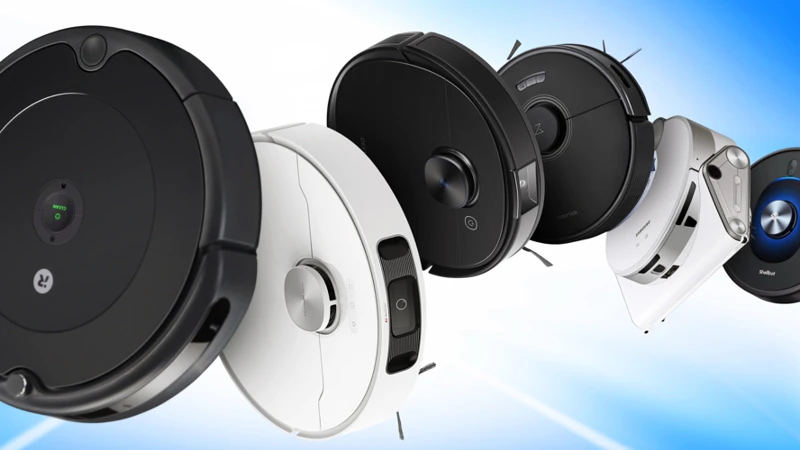
Selecting the ideal robot vacuum with self-maintenance features can be a daunting task. There are several crucial factors to consider before making a purchase. You don’t want to end up with a vacuum that doesn’t fulfill your cleaning needs or stretches your budget. The right product can save you a lot of effort, time, and money in the long run. With so many choices available in the market, it’s essential to know what sets apart one brand or model from another. Let’s dive into some of the important factors that you should think about before deciding which robot vacuum cleaner will suit your household best.
Budget
When considering a robot vacuum with self-maintenance features, it’s important to keep your budget in mind. There are a variety of options available at different price points, each with their own set of features. Here are some factors to consider when it comes to budget:
- Price Range: Robot vacuums can cost anywhere from under $100 to over $1000. Determine your budget and stick to it.
- Features: Compare the features of different models at different price points. Decide which self-maintenance features are essential for your needs and make sure the vacuum you choose has them.
- Warranty: Look into the warranty offered with the vacuum. Sometimes, a higher-priced machine may come with a longer warranty, which could save you money in the long run.
- Reviews: Read reviews of robot vacuums within your price range to see which ones are most highly recommended. It’s important to keep in mind that the cheapest option may not always be the best value, as it may not perform as well or have the same level of self-maintenance features as a higher-priced machine.
Remember that your budget should be a guide, but not necessarily the determining factor when choosing a robot vacuum with self-maintenance features. It’s important to consider your household needs and which features will provide the most benefit in the long run. With a bit of research, you can find a robot vacuum that fits both your budget and your cleaning needs.
Household Needs
When considering purchasing a robot vacuum with self-maintenance features, it’s important to evaluate your household needs to make the best decision for your home. Here are some factors to consider:
| Household Size | Do you have a small or large household? A robot vacuum with self-maintenance features may be more beneficial for larger households with more dirt and debris to clean up. |
| Types of Flooring | Do you have mainly carpet, hardwood floors, or a combination of both? Consider a robot vacuum with specialized brushes and suction power to handle the specific type of flooring in your home. |
| Pets | Do you have pets that shed a lot? A robot vacuum with a self-cleaning brushroll and a larger dustbin may be more suitable to manage pet hair and dander. |
| Obstacles | Are there a lot of obstacles in your home, such as furniture or toys? Consider a robot vacuum with advanced mapping and navigation features to avoid obstacles and clean efficiently. |
| Allergies | Do you or anyone in your household suffer from allergies or respiratory issues? Look for a robot vacuum with advanced filtration systems to minimize allergens and improve air quality. |
By identifying your household needs and considering these factors, you can choose the best robot vacuum with self-maintenance features that will effectively clean and maintain your home.
Brand and Model Reputation
When it comes to investing in a robot vacuum with self-maintenance features, it’s important to consider the brand and model reputation before making a final decision. Here are some factors to keep in mind:
- Customer Reviews: One of the best ways to gauge a brand and model’s reputation is by reading customer reviews. Look for reviews that specifically mention the self-maintenance features of the robot vacuum to see if they deliver on their promises. Reviews that mention the brand’s customer service can also give you an idea of how responsive and helpful the company is when issues arise.
- Expert Opinions: Industry experts and publications can also provide valuable insights into the reputation of a brand and model. Look for reviews and comparisons that mention the self-maintenance features you’re interested in to see how they stack up against other models on the market.
- Warranty and Support: Consider the warranty and support offered by the brand. A good warranty can give you peace of mind that your investment is protected, while helpful customer support can assist you with any issues that may arise with the robot vacuum’s self-maintenance features.
- Brand Reputation: Finally, consider the overall reputation of the brand. Has it been around for a while? Does it have a history of producing quality products? Checking out the brand’s website and social media pages can give you an idea of any awards or industry recognition they’ve received, as well as any innovations they’re working on for future models.
Keep in mind that a reputable brand and model may come with a higher price tag, but it’s worth it to invest in a robot vacuum that will last and perform well over time.
Tips for a Well-Maintained Robot Vacuum
Maintaining a robot vacuum is essential to ensure optimum cleaning performance and longevity. Without proper maintenance, these helpful machines can become less effective at picking up dirt and debris, and may eventually break down. The good news is that with a few simple tips, you can keep your robot vacuum running smoothly for years to come. So, if you’re wondering how to best maintain your robot vacuum, keep reading! Here are some essential maintenance tips that will help your robot vacuum perform at its best:
Clean Filters Regularly
One crucial aspect of keeping your robot vacuum in top condition is regularly cleaning the filters. These components trap dust, debris, and other particles that can affect the vacuum’s performance. Over time, a dirty filter can reduce suction power, cause the vacuum to overheat, and even damage the motor.
To avoid these issues, it’s essential to incorporate filter cleaning into your vacuum maintenance routine. The frequency at which you need to clean your robot vacuum filters can depend on several factors, such as the frequency of use and the level of dirt and debris in your home.
In general, it’s best to clean your filters at least once a week. However, if you have pets or frequently use the vacuum in high-traffic areas, you may need to clean them more frequently to maintain optimal performance.
Here is a table summarizing the benefits of cleaning filters regularly:
| Benefits of Cleaning Filters Regularly |
|---|
| 1. Maintains optimal suction power |
| 2. Enhances cleaning performance |
| 3. Prevents overheating and motor damage |
| 4. Extends the life of the vacuum |
| 5. Improves indoor air quality by trapping dust and allergens |
Cleaning robot vacuum filters is a straightforward process that typically involves removing the filter from the vacuum, tapping it to remove loose debris, and washing it with water. Some filters are reusable and can be washed and reused for several months, while others need to be replaced every few months.
Make sure to consult your vacuum’s manual for specific instructions on how to clean and replace the filters. It’s also a good idea to purchase additional filters to have on hand to ensure your robot vacuum is always running smoothly.
By incorporating filter cleaning into your robot vacuum maintenance routine, you can enjoy the many benefits that these self-maintenance features have to offer.
Empty Dustbin Frequently
One important self-maintenance feature to keep in mind when using a robot vacuum is the frequency at which you should empty its dustbin. The dustbin is where all the dirt, dust, and debris collected by the vacuum are stored. As it fills up, it can decrease the performance of the vacuum and reduce its cleaning ability overall.
To make sure your robot vacuum is working at maximum efficiency, it’s essential to empty the dustbin frequently. This not only ensures a thorough cleaning but also prolongs the life of the vacuum itself.
Here are some tips for emptying your robot vacuum’s dustbin:
- Check the dustbin after each cleaning cycle.
- Depending on the size of your dustbin and the amount of debris in your home, you may need to empty it multiple times per week.
- Make sure to dispose of the contents properly and safely.
- You may also want to consider investing in a robot vacuum with a self-emptying dustbin feature to further reduce the need for manual maintenance.
Remember that emptying the dustbin is a crucial step in maintaining your robot vacuum’s performance and efficiency. By doing so frequently and correctly, you can help ensure your vacuum is always operating at its best.
Clean Brushes and Rollers
When it comes to maintaining your robot vacuum, one of the most important tasks is cleaning the brushes and rollers. Over time, these components can become clogged with hair, dust, and other debris, which can affect the vacuum’s cleaning performance. Here are some tips for keeping your brushes and rollers clean and functioning at their best:
- Remove and inspect the brushes and rollers regularly: Depending on how frequently you use your robot vacuum, you may need to clean the brushes and rollers after every use or once a week. To do this, simply remove them from the vacuum and inspect them for any debris or tangles.
- Clean thoroughly: To clean the brushes and rollers, use a small cleaning tool to remove any hair or debris that’s caught in the bristles. You may also want to use a damp cloth to wipe them down and remove any additional dust or dirt.
- Replace worn out brushes and rollers: Over time, the brushes and rollers on your robot vacuum will wear out and need to be replaced. Pay attention to any signs of damage or reduced performance, such as the vacuum struggling to pick up debris or making unusual noises.
- Protect your floors: Some robot vacuums come with brushes that are designed for specific types of flooring. For example, some have rubber bristles that are softer and gentler on hardwood floors. If you have a similar vacuum, make sure you’re using the appropriate brush or roller for your flooring type.
By taking the time to regularly clean and maintain your robot vacuum, you can ensure that it’s always operating at peak performance. So, schedule some time each week to inspect and clean the brushes and rollers, and replace them as needed. In the long run, this will help extend the life of your vacuum and provide you with cleaner floors.
Replace Parts as Needed
Just like any other appliance, robot vacuums also require replacing certain parts when needed. This not only ensures that the vacuum functions properly but also helps to extend its lifespan. Here are some parts that may need to be replaced and some tips on what to look out for:
- Battery: The battery is one of the key components of a robot vacuum. Over time, the battery life may start to deteriorate, and the vacuum may not last long enough to clean your entire home. Check your vacuum’s manual to see if the battery is replaceable, and if so, what type of battery it needs.
- Filter: The filter traps dust and debris and prevents it from entering the motor. A clogged filter can cause the vacuum to lose suction power and may even damage the motor. Check your filter periodically and replace it when it becomes too dirty.
- Brushes and Rollers: The brushes and rollers are responsible for picking up dust and debris. However, they can become tangled with hair and other debris, which can cause them to stop working properly. Check your brushes and rollers regularly and clean them as needed. If they become too worn out, replace them altogether.
- Sensors: The sensors on a robot vacuum help it navigate your home and avoid obstacles. If the sensors are faulty, the vacuum may not be able to navigate properly and may even damage your furniture. Check your sensors periodically and replace them if they are not working as they should.
By following these tips for replacing parts as needed, you can help ensure that your robot vacuum continues to function properly and effectively cleans your home. Remember to always check your vacuum’s manual for specific instructions on how to replace each part.
Conclusion
In conclusion, investing in a robot vacuum with self-maintenance features is a wise choice for any homeowner looking to simplify their cleaning routine. The benefits of these features, such as saving time and effort, extending the life of the vacuum, maximizing cleaning performance, and reducing maintenance costs, far outweigh any additional costs of the vacuum.
When choosing a robot vacuum with self-maintenance features, it is important to consider factors such as your budget, household needs, and the reputation of the brand and model. This ensures that you get the most out of your investment and find a vacuum that meets your specific needs.
Furthermore, maintaining your robot vacuum is crucial to ensure that it functions properly for years to come. Remember to clean the filters regularly, empty the dustbin frequently, clean brushes and rollers, and replace parts as needed to keep your vacuum in top shape.
All in all, a robot vacuum with self-maintenance features not only makes cleaning easier, but it also contributes to a cleaner and healthier living environment. So, don’t hesitate to invest in one today and enjoy the benefits that it brings.
Frequently Asked Questions
1. How often should I clean the filters on my robot vacuum?
It is recommended to clean the filters once a month or more frequently depending on usage and the manufacturer’s instructions.
2. What is auto dirt disposal on a robot vacuum?
Auto dirt disposal is a feature that allows a robot vacuum to empty its dustbin into a designated receptacle without human intervention, ensuring continuous cleaning without interruption.
3. How does a self-cleaning brushroll work?
A self-cleaning brushroll uses comb-like bristles to remove tangled hair, dust and debris from the brushroll automatically. This helps to prevent clogs and maintain optimal cleaning power.
4. Can self-maintenance features on robot vacuums reduce maintenance costs?
Yes, self-maintenance features can help reduce maintenance costs by reducing wear and tear on the parts and the need for manual cleaning or replacement.
5. What are the benefits of a self-emptying dustbin?
A self-emptying dustbin reduces the need for frequent emptying and also prevents the spread of dust and allergens by containing them in a sealed receptacle.
6. How does a self-adjusting cleaning head improve cleaning performance?
A self-adjusting cleaning head automatically adjusts its height to accommodate different floor types and surface textures, ensuring that the vacuum maintains maximum suction and cleaning power.
7. Is brand reputation an important factor to consider when choosing a robot vacuum with self-maintenance features?
Yes, brand reputation is important because it can indicate the quality and reliability of the product, customer support, and warranty.
8. What are some tips for maintaining a robot vacuum?
Clean filters regularly, empty the dustbin frequently, clean brushes and rollers, and replace worn or damaged parts as needed.
9. How do self-maintenance features save time and effort?
Self-maintenance features reduce or eliminate the need for manual cleaning or intervention, saving time and effort on the part of the user.
10. Which self-maintenance feature should I consider most important when choosing a robot vacuum?
The most important self-maintenance feature will vary depending on your household needs and preferences, but auto dirt disposal and self-cleaning brushrolls are two features that can greatly enhance the convenience and performance of a robot vacuum.
